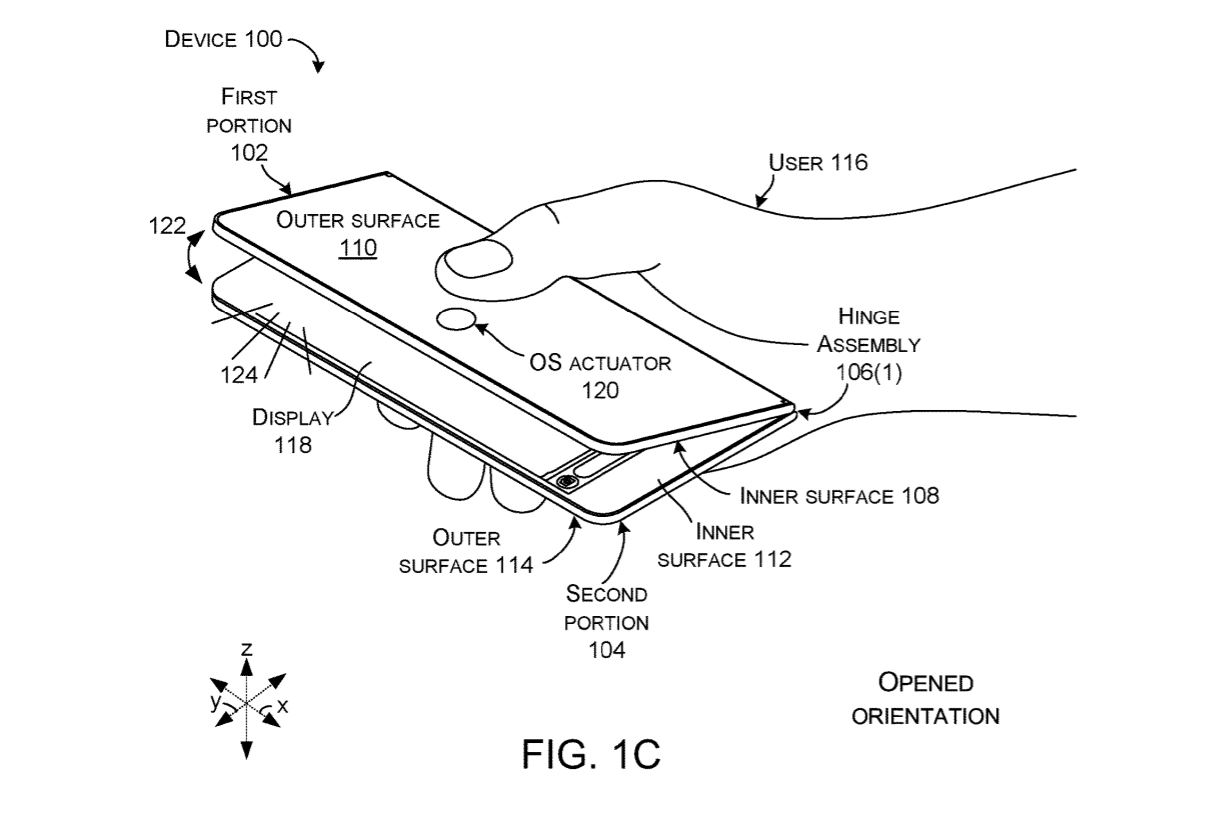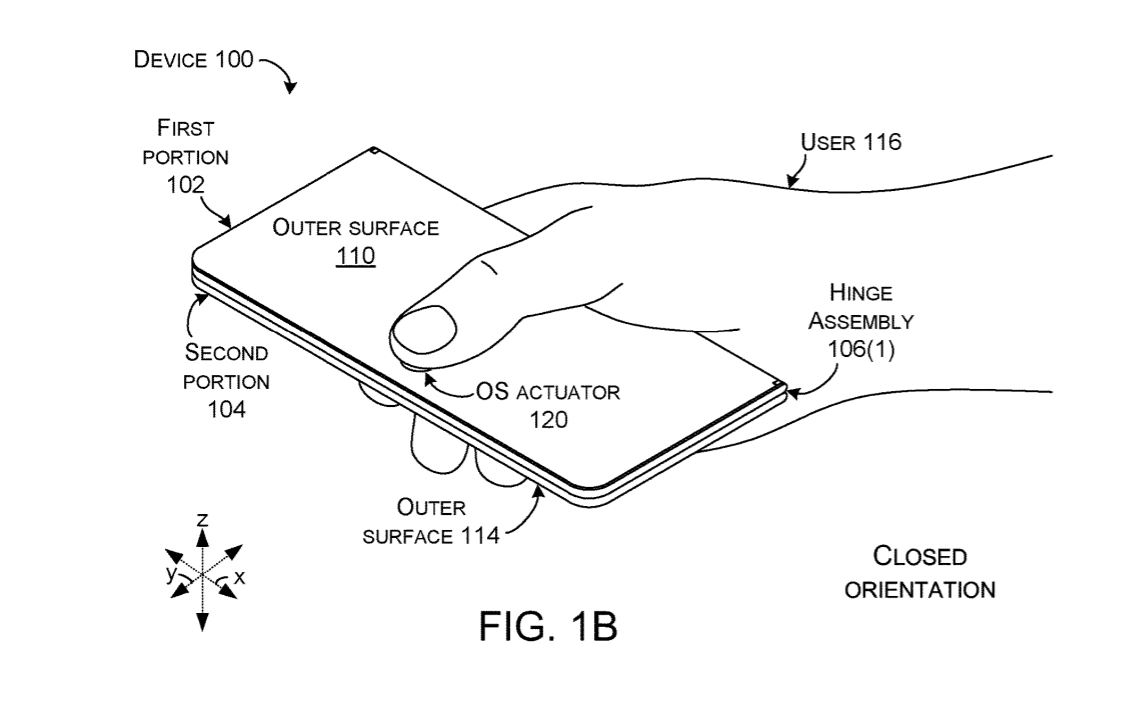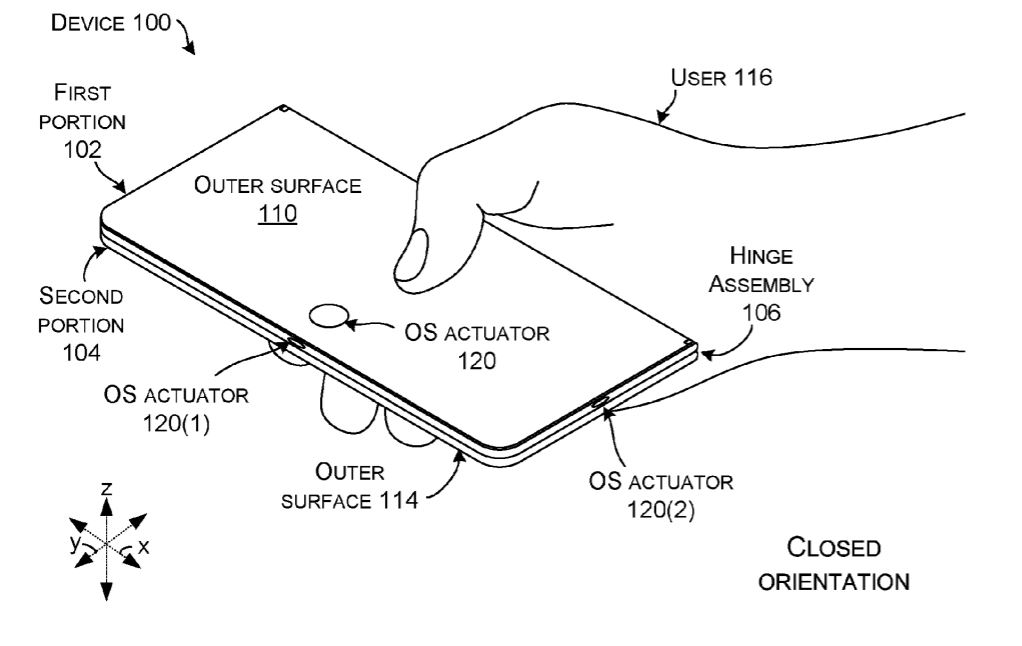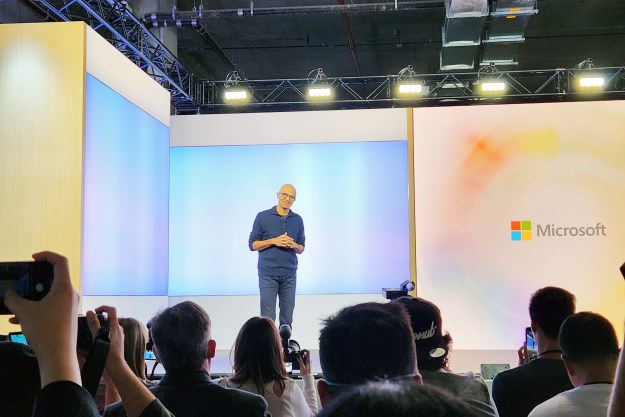It’s no secret that Microsoft is working on a folding Surface for 2020, and plenty of patents have already hinted at the would-be design plans for the device. In the latest development, a recent patent suggests that a foldable Microsoft Surface device could feature multifunction buttons and new ways for users to interact with its dual-screen layout.
It was originally filed with the U.S. Patent and Trademark Office in January 2018 and made public on July 18, 2019. The patent for “Orientation Specific Control” describes a specific way for users to control a foldable device in various orientations. Microsoft explicitly mentions the use of an “orientation-specific actuator,” as well as “second functionality in response to engagement of the orientation-specific actuator” in the patent, first discovered by the blog Windows Latest.
While this technology makes more sense for a foldable Microsoft phone like the now-shelved Project Andromeda, the patent still suggests that Microsoft could be thinking of including a multifunction button somewhere on the rumored dual-screen Surface Centarus. Not only would the orientation-specific actuator control landscape and portrait mode, but it also could serve as a button to control other activities while the foldable tablet or Surface is held open in other positions. For instance, the button could also activate a sleep mode, and might have various other purposes based on how long it is pressed.
“An example device can be a foldable computing device. Engaging an orientation-specific actuator (e.g., a button) of the device while the device is in a closed orientation can affect the first range of functionality. However, when an orientation of the device changes, the functionality accessible via the same orientation-specific actuator can also change,” Microsoft explains.
As always, not all patents evolve into a final product, but Microsoft has actively been considering new technologies for Surface devices. Previous Microsoft patents have detailed the folding mechanism in a computing device, as well as folding -related technologies for the screen. Microsoft has also played with the idea of a thinner Type Cover keyboard for its Surface Pro devices, as well as support for wireless charging and a rear screen on the Surface Pro.
Editors' Recommendations
- Surface Pro 10: all the major changes rumored for the new model
- This dual-screen laptop does something unheard of
- I’m worried about the future of the Microsoft Surface
- Everything Microsoft didn’t announce at its 2023 Surface event
- Microsoft’s Surface Laptop Go 3 is a more capable budget laptop





